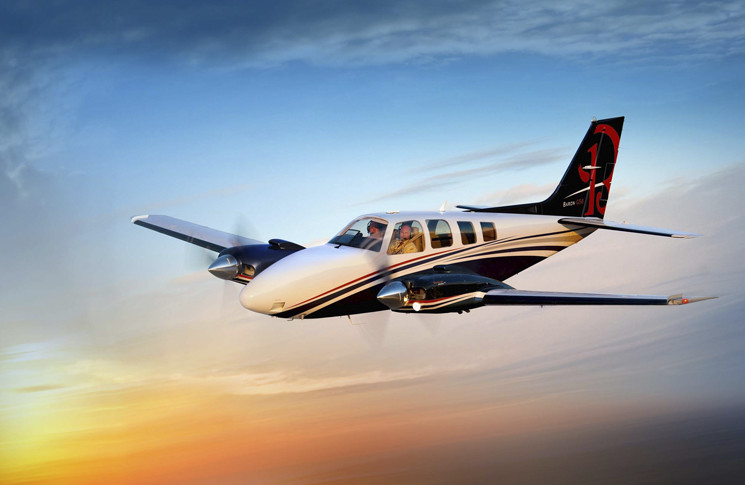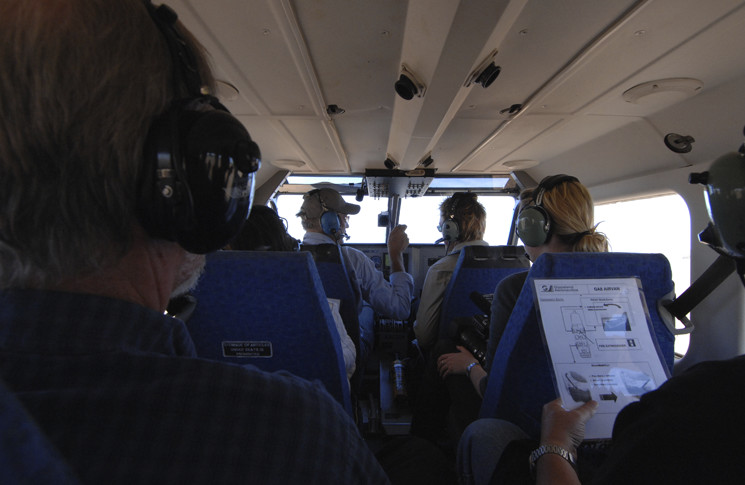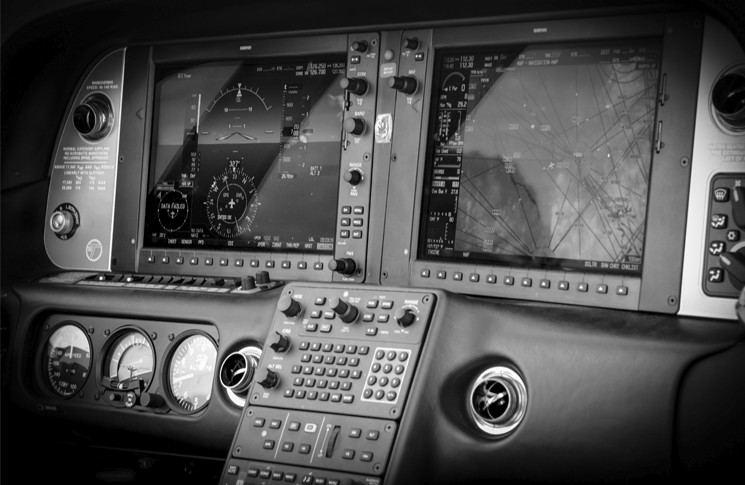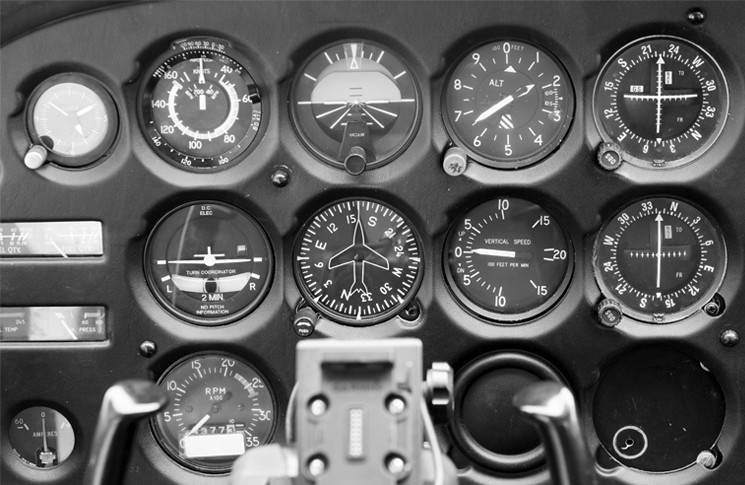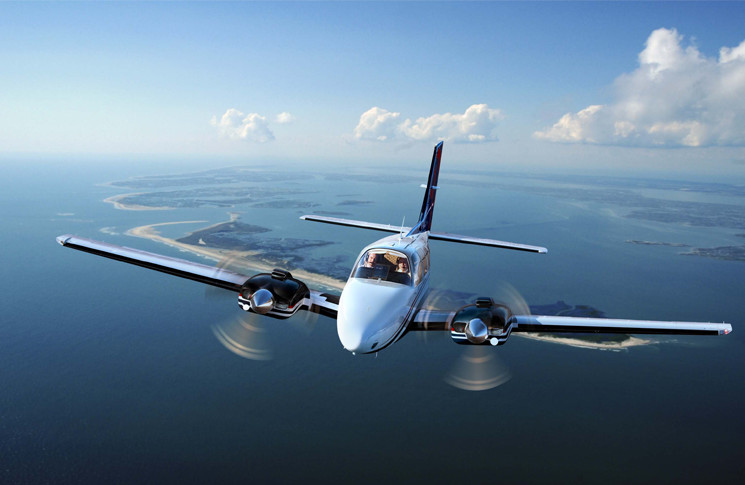Thomas P. Turner discusses the dangers of distraction and the myth of multi-tasking
I was training the pilot of a Beech Baron 58. After time spent at altitude practising stalls, slow flight, steep turns and other basic proficiency manoeuvres, we returned to the airport for some landing practise. On downwind in the circuit, I pulled back on the twin’s right throttle, simulating an engine failure. The pilot appropriately applied rudder, elevator and aileron to counter the aeroplane’s tendency to roll, pitch and yaw away from controlled flight with a working engine on one wing and a lot of unproductive drag on the other.
After my student completed the engine failure and securing procedure I moved the throttle and propeller controls to establish ‘zero thrust’—a power setting that simulates the performance of flying with a feathered ‘dead-engine’ propeller. The pilot then turned onto base leg. Following the circuit around to final approach, he reduced power on the ‘good’ engine to establish a normal rate of descent. He pulled the good engine’s throttle almost all the way to idle in order to get the correct rate of descent at the proper speed on final approach. Having flown only a very few simulated engine-failure landings over several years of Baron ownership, he didn’t realise that this throttle position was unusual. As we approached the runway threshold I pointed out that the pilot had failed to extend the Baron’s landing gear. Focusing intently on the engine failure and single-engine approach, he had fallen prey to a common distraction.
The owner of a Cirrus SR20 accepted his aircraft from an avionics installation shop. The aeroplane was an early version with traditional round flight instruments, and the shop had installed an updated glass cockpit to replace the analog gauges. Instrument meteorological conditions (IMC) prevailed, and the pilot departed into the low overcast on his first flight using the dramatically different instrumentation. Entering the clouds he was given a heading change by air traffic control. The aeroplane entered the right turn but continued into a steep bank and spiraled into the ground.
The student pilot and instructor in a Garmin G1000-equipped Cessna 172 were taxiing for a training flight early in the student’s career. The instructor was attempting to show his student how to use the geo-referenced taxi diagram on the Garmin’s multifunction display when both pilots, heads down in the cockpit, taxied off the pavement and the Skyhawk’s propeller struck a taxiway light.
A wide body Lockheed L1011 airliner, operating as Eastern Air Lines Flight 401, had a landing gear indicating malfunction while on approach to Miami, Florida. The captain contacted controllers, advised them of the problem, and requested a vector at 2000 ft over a sparely populated area. Each of the airliner’s crew members became progressively involved in troubleshooting the gear indication, and nobody noticed when the autopilot was accidentally disengaged. A controller noticed the radar target descending into the swampy Everglades but did not effectively communicate his concern to the aircraft. The crash killed 101 of the 176 people on board.
Multi-tasking
Many people consider themselves to be good at multi-tasking, that is, doing multiple things at the same time. Psychologists tell us this isn’t exactly true, that people cannot actually concentrate on more than one thing at a time. People who write ‘ability to multi-task’ on their resume are really saying they have the ability to rapidly change focus and concentration from one thing to another. It may seem they are fully engaged in two or more tasks at the same time, but in reality each task is getting its moment of focus, and then is left behind as focus shifts to another. With each focus shift comes the need to ‘get back up to speed’ on the next task. The more things they are trying to do at the same time, the more time elapses between focus on any one item and the more status may have changed that requires an update before effective action.
For a pilot, this means attempting to do too many things at one time may result in not doing any one item well enough to keep up as the aeroplane speeds through the atmosphere. This is what causes a pilot to ‘get behind the aircraft’—diverting focus from critical tasks to less critical ones, so much so that they are unable to get something vital done in time. At that point, avoiding an accident is a function of luck and inertia—neither of which is reliable as a risk-mitigation strategy.
What are some techniques, then, that can help a pilot focus on what’s important, while still addressing less-vital tasks?
Standard operating procedures
The incredible safety record of airline and professionally piloted business flight operations is due in large partly to the use of standard operating procedures (SOPs) for all phases of flight, from preflight planning to securing the aircraft after shutdown. SOPs are ‘best practices’ developed by experts ahead of time, when they are not under the pressures and stress of flying an aeroplane. They mutually agreed (or imposed) upon flight crews, who are then trained and evaluated on using SOPs appropriately.
An example of an SOP is to fly a stabilised approach using known aircraft attitude, configuration (flap and, if retractable, landing gear extension) and power setting, to crosscheck performance against those known settings, to detect any discrepancy if time permits, and to abandon the task if the discrepancy cannot be resolved in time. My student flying his Baron in on one engine, for instance, should have recognised that his pitch, aircraft configuration, airspeed and glide path looked right but the power was abnormally low compared to expectations. A speed, altitude or performance deviation is usually the result of incorrect power or incorrect drag; so if your power is wrong look at the drag devices (flaps, landing gear, or engine gauges) to see if anything can be rapidly fixed from the pilot’s seat. If my Baron student had not discovered the outlier indication he should have abandoned the training single-engine landing, powering up both engines to conduct a go-around. Yes, even training can—and should—be abandoned if a discrepancy cannot be resolved.
Checklists
Using checklists is one type of standard operating procedure. Most pilots are taught to use checklists for start-up and before take-off tasks, but then stuff the checklist away in a seat pocket (or as I saw a pilot do once, throw it into the back of the aircraft) before taking off. After all, you know how to fly an aeroplane, so why do you need the instructions?
Checklists, however, serve more purposes than just instruction. Checklists serve as reminders to back-up the tasks you’ve done from memory. They prioritise and organise your actions. Most importantly, they get you back into the task at hand when you’ve been distracted by something else. For example, I’m in the habit of always looking at the printed checklist after making any transition from one phase of flight to another—from climb to cruise, for instance. Nine times out of 10 (or even more) there is nothing on the checklist that I’ve not already done. But every now and then I catch myself having forgotten something—and using the checklist gets my mind back in the game.
Sterile cockpit rule
Another SOP employed by airline pilots is called the sterile cockpit rule. This rule was a regulatory response to a major airline accident in which the cockpit voice recorder caught the crew talking about personal matters when in the process of flying an approach to land. Investigators posit that the crew’s attention was diverted from critical flying tasks, though the crew members obviously felt they could multi-task.
In the airline world, the sterile cockpit rule says to avoid any extraneous focus or conversation any time the aeroplane is within 10,000 ft of the ground. Most general aviation aeroplanes never get above 10,000 ft, so the rule isn’t directly transferable. However, as a prioritisation technique, a modified sterile cockpit is still extremely useful to the light-plane pilot. Invoke the sterile cockpit rule any time you are within 1000 ft of the ground and within 1000 ft of a level-off altitude from either a climb or a descent.
Brief your passengers that in these higher-workload phases of flight you request they hold any questions or conversation, unless it directly pertains to safety. As for yourself, in these areas, defer non-essential tasks until you have climbed 1000 ft above ground level or you’ve completed your level-off on your new altitude. This is definitely not the time to be calling up new charts on a notebook computer, calling to arrange fuel, or even making a check of the weather—all these things are tasks that will distract you from making a good take-off or landing, or an accurate level-off at the proper altitude.
Distraction and fixation
Issues that distract us cause us to focus on them to the exclusion of everything else. When distraction becomes fixation, we may not have any mental bandwidth left to fly the plane. An airsick passenger, a crying baby, a door or window that opens in flight, or indications such as an alternator out light threaten to draw all our attention. Think of the Eastern Air Lines L-1011 crew—instead of detailing one pilot to fly the plane and the others to resolve the gear-light discrepancy, the entire crew focused all their attention on solving the problem. Remind yourself that if you feel you are focusing on any one thing for more than a few seconds at a time, that you need to scan the instruments and, if you’re in visual conditions, check all quadrants for traffic. Don’t let the natural human inability to multi-task lead you to disaster.
Keeping focus
There’s no avoiding it—you are going to get distracted, often. The trick is knowing the kinds of situations that are likely to result in distraction, and using techniques that maintain or restore your focus to what’s important to be doing at the time.

